#lampriformity
Text

coloured this one :)
(she/they for character)
#my art#artists on tumblr#character design#illustration#original character#lampriformity#oc: azura#my darling gfs oc.#mechanic#sorry shes taken her full time job is being the boyfriend to her car robot gf#oc#queer art
1K notes
·
View notes
Note
I know nothing about you pingoes but I see Eva and I see you on my dash constantly you are my friend and I love you /p
YAYYY THANK YOU !!!!!!! :] i appreciate your oceanposting too im glad to have another fish-loving friend on this website
0 notes
Text
Taxonomy Tournament: Fish


Lampriformes. This order is made up of opahs (also known as moonfish or sunfish) and their relatives, such as oarfish, crestfishes, and ribbonfishes
Stomiiformes. This order is made up of deep-sea fishes. It includes dragonfishes, loosejaws, viperfishes, and bristlemouths, the most populated family of vertebrates, with population numbering in the hundreds of trillions to quadrillions.
#animals#biology#polls#poll tournament#zoology#opahs#sunfish#fish#viperfish#bristlemouths#Lampriformes#Stomiiformes#0x13v0x2c
58 notes
·
View notes
Text

opah 🌕 (lampris guttatus)
#opah#moonfish#lampris guttatus#fish art#marine life#sea life#fish#lampriformes#watercolor#illustration#nature illustration#painting#bigeelsart
45 notes
·
View notes
Text
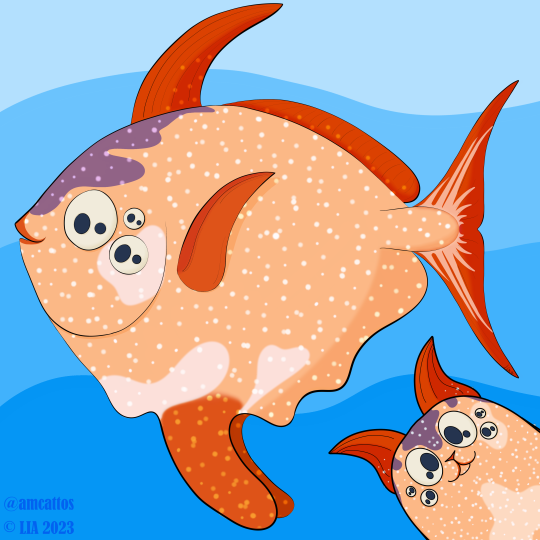

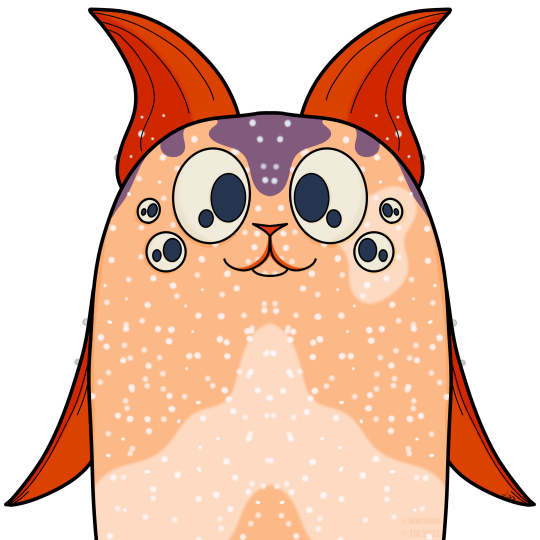
© LIA 2023
Opawh
Yet another cattofish because people keep suggesting fish to me and I keep listening. Opah (or moonfish) is the common name given to fish in the small family Lampridae. They are unique among fish in that they can maintain the core of their body up to 5 °C higher than the surrounding water. Very little else is known of their biology and ecology but they are thought to be solitary and live out in the open ocean at depths of 50 to 500 m.
#catto#illustration#cat#alien#monster#digital illustration#art#fish#fish art#opah#moonfish#lampriformes#Lampridae#orange#ocean
1 note
·
View note
Text
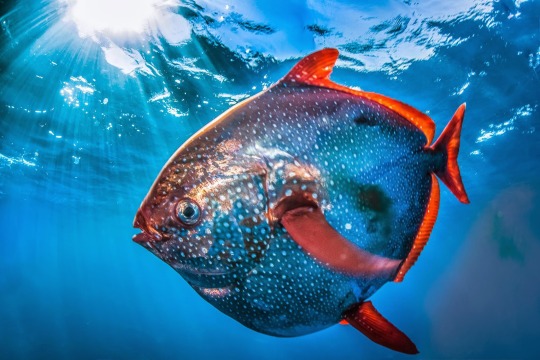
FISH KIN: @lampriformity, your fish kin is...
Lampris guttatus, the Opah! Now, I do personally think it's cheating to assign you a lampriforme, because like. It is literally in your name, but I just couldn't resist this guy- and how could I? The Opah is a discoid pelagic ray-finned fish closely related to the Oarfish, probably one of the best-known Lampriformes! The Lampriformes shaped like the Opah are called "bathysomes", where the longer, slimmer ones are called "taeniosomes"- translating to "deep-bodied" and "ribbon-bodied" respectively! While the Opah is kinda an odd-man-out among the Lampriformes, given its unusual shape, the fossil record shows that MOST prehistoric Lampriformes were bathysomes- and it's only relatively recently that they started getting stretched longer! Thank you so much for your donation!
94 notes
·
View notes
Text
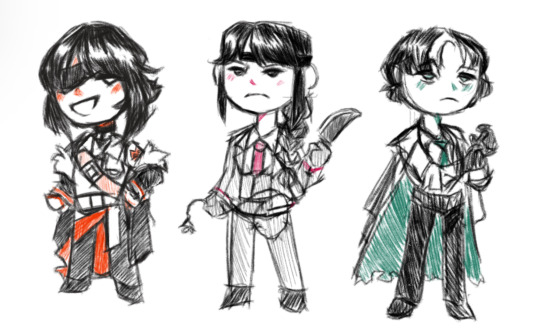
finally getting around to working on the little beans
@lampriformity @sylph--co @vivienna-vivid your guys were the first 3 done! yippee!!
the rest of them are getting finished :D 👍
16 notes
·
View notes
Text
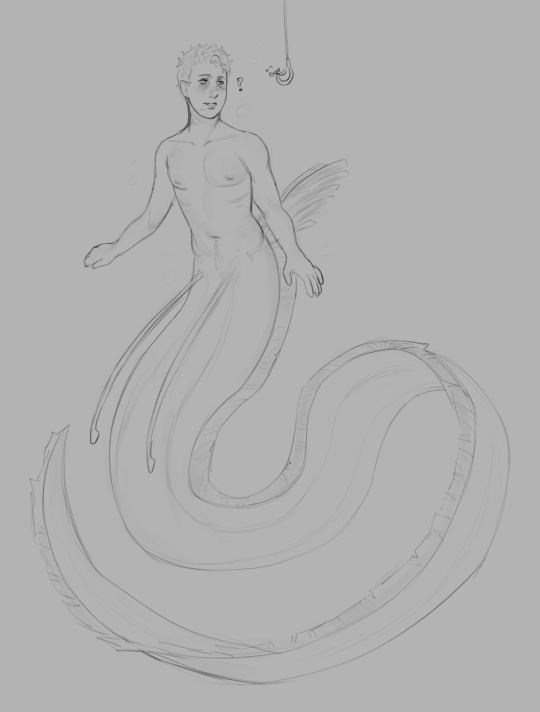
ok i drew dennis as an oarfish. when ur girlfriend is a large, greatly elongated, pelagic lampriform fish belonging to the small family Regalecidae
17 notes
·
View notes
Text
Animal Crossing Fish - Explained #200
Brought to you by a marine biologist and...holy hell, 200?!!
CLICK HERE FOR THE AC FISH EXPLAINED MASTERPOST!
Well, I’d like to commemorate this momentous occasion by covering a really interesting creature that was featured in AC Pocket Camp and that is the Opah. I’m a little biased here because I just love weird fish, especially deep sea species we don’t really know a lot about. It’s about the mystery. So, I’ll do my best to cover this amazing thing. If you want to know why we don’t have a lot of information into deep sea fish, check out my coverage of ACNH’s museum tour of the deep sea tank.
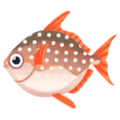
The Opah appeared in AC Pocket Camp for Fishing Tourney 40, which occurred in July 2021. Like I mentioned in the last entry, it appears that ACPC is less concerned with the actual temperature range or habitat of the fish it chooses for what events. The Opah is considered a deep-sea species, or at least an open ocean species that just doesn’t come close to land. It often lives at depths where the water temperature is around 4º C (about 39º F), which is, ya know, not a balmy summer temperature. Although Opahs as a group have a cosmopolitan distribution (aka they are found all around the world, including tropical areas) they tend to stay deep where the water is cool and sunlight can’t reach.
Anyway, the Opah is a pretty unique fish. It belongs to the Order Lampriformes, a small group of fish that include mostly deep-sea and pelagic species. The Order’s name comes from the Opah’s round shape and brilliantly-colored fins and skin, though most Lamprids are more long and slender, with most fish in the Order belonging to the “ribbonfish” clade, for which the infamous Oarfish is a part. That being said, Opahs exist apart from their cousins in the Lampridae family, which only houses one Genus, Lampris. For much of the time we’ve known that Opahs existed, we accepted that there were two species within this Genus. However, in recent years, Lampris guttatus, the comsopolitan species, has been broken up so that there are now six species with more limited ranges. As I’m sure AC Pocket Camp wouldn’t recognize this, not to mention the study occurred in 2018 after ACPC was released, I’m pretty confident this is simply Lampris guttatus, or the (original) Opah.

Ralph Pace (NOAA Fisheries), Public domain, via Wikimedia Commons
So, despite the fact they look a bit goofy and fat, these fish are actually really fast and exhibit endothermy, or warm-bloodedness. In fact, the Opah is the only fish we’ve discovered so far that has whole-body endothermy, in which all of its internal organs and muscles are kept at temperatures higher than the surrounding water. (Please note, this is still unlike birds and mammals that keep their warmth at a constant temperature - the Opah’s body temp still fluctuates.) On top of that, Opah also exhibit regional endothermy, or the act of keeping some parts of the body warmer than others. This type of endothermy is more akin to billfish, tuna, and lamnid sharks (like the great white, porbeagle, salmon, and makos). This type of endothermy usually keeps the eyes, brain, and swimming muscles at an elevated temperature which helps these fish remain active hunters in colder waters. So, unlike most deep-sea fish, the Opah doesn’t just float around in the dark waiting for prey to come to it - it has the power and energy to seek out and chase down its food, which often includes squid and smaller fish.
And there you have it. Fascinating stuff, no?
#opah#deep sea#marine biology#animal crossing#animal crossing pocket camp#acpc#science in video games#animal crossing fish explained
13 notes
·
View notes
Text
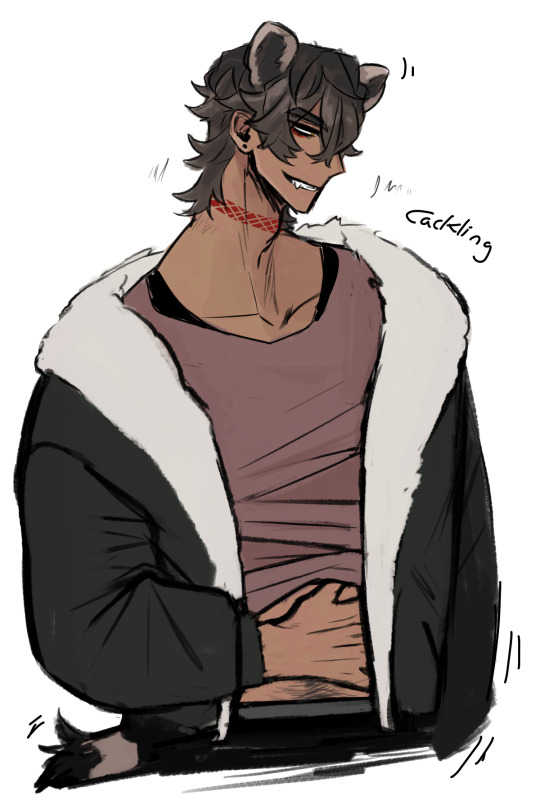
hyena girls who cackle like theyre insane .......cute............
#my art#oc#lampriformity#ive been obsessed with just draeing milgram roleplay ocs lately forgive me for not posting.................#kemonomimi#oc: lai shi#gf oc as usual#i need her sooooooooooo bad helllp mmmee
58 notes
·
View notes
Text
Taxonomy Tournament: Fish
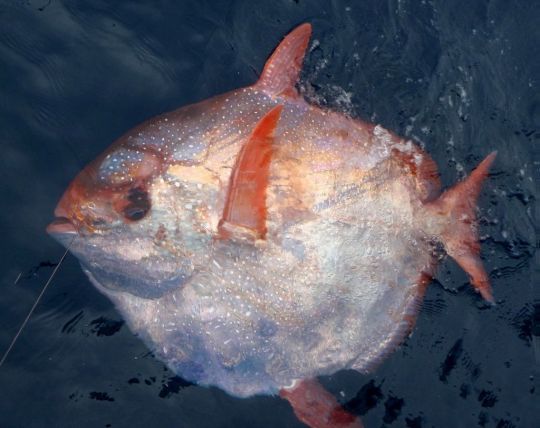

Lampriformes. This order is made up of opahs (also known as moonfish or sunfish) and their relatives, such as oarfish, crestfishes, and ribbonfishes
Stylephoriformes. This order is made up of one species of fish, the Stylephorus chordatus or tube-eye, an extremely elongated deep-sea fish.
#animals#biology#polls#poll tournament#zoology#opahs#sunfish#fish#tube-eye#Lampriformes#Stylephoriformes#0x13v0x6c
48 notes
·
View notes
Note
goof morning!! i like ur new url !
goofmorning !! amd thank you sm :-] !
#nobody asked but . tis lampri like lampriformes! order that opah fish and oarfish are part of#and friend :-] bc yeas#ask#my friends#miixtapee
4 notes
·
View notes
Text

NAUTILUS BOY
#mermay2019#mermay#f arts#artists on tumblr#I AM ON A ROLL#im surprised by the lack of nautili on here so#funky little boy who has to jet backwards#probs making him and lampriforme characters#also i just realized this has the cleanest lineart ive ever done w/out a sketch im so proud#nautilus
56 notes
·
View notes
Photo
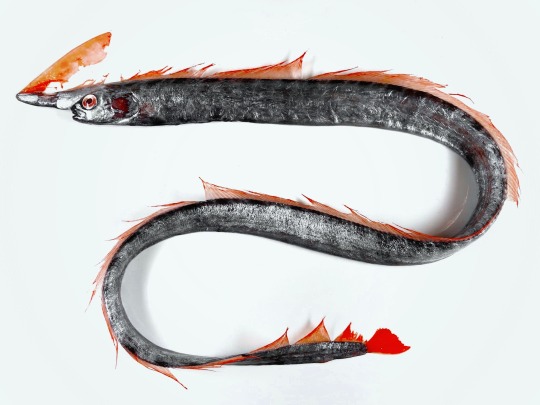
An absolutely beautiful specimen of, what looks like, a unicorn crestfish (Eumecichthys fiski). This is a member of the lampriform order, and thus is a relative of the spectacular giant oarfish.
Original photo by Yoshiaki KAI on Twitter.
48 notes
·
View notes
Note
Where can we find your google doc? Also is it possible that anjanath and deviljho are tyrannosaurs?
Hiya! The link for the Google doc is right here. I updated it earlier this week, so a ton of monsters and endemic life were newly added.
Now, on to your second question.
The short answer is: no to the deviljho, tentative yes for the anjanath.
Before we get to the long answer, I feel like I should give you a quick explanation for how my thought process works. Generally, I look at a monster and try to isolate its most distinctive features (morphology, diet, behavior, geographic range, etc), and from there see if any of these features line up with real-world animals. I usually end up in one of three scenarios:
Sometimes I get lucky because Capcom did their homework and designed a creature that’s like the archetypal-whatever, so it’s really easy to figure out its relationship to extant organisms.Example: The kelbi is an artiodactyl (an even-toed ungulate) in the infraorder Pecora, more specifically an antilocaprid or (less likely) a cervid.
Sometimes a monster looks like it might belong to a specific group, but upon closer observation, it has one or more characteristics that violate the criteria for that group.Example: At first glance the sealord’s crestfish looks like an oarfish. So, case closed, right? Well, no. Oarfish are covered in easily-abraded guanine rather than scales. The sealord’s crestfish, on the other hand, has these honkin’ overlapping leptoid scales, which rules out that possibility. It’s likely not a crestfish (Lophotidae) either, again because it has scales, but also because lophotids have cloacal ink sacs, which as far as we know the sealord’s crestfish lacks. Also, lophotids are tropical, and last time I checked, tropical ecosystems don’t have ice sheets. We can at least still assume that the sealord’s crestfish is related to them in some way, which means the next step is to backtrack to the last highest taxon (Lampriformes) and see if it meets any of the requirements there. Which thankfully, it does. Lampriformes can have either naked skin or scales. This is the point where it’s safe to classify the sealord’s crestfish as a relative of the oarfish and true crestfish, within its own unique family (Mareridae).
The final scenario is one where a monster’s characteristics are so bizarre that I can’t find a real-world analog to compare it to. This is the scenario I spend most of my time dreading, because the phylogenetics for these monsters tends to veer toward hypothetical/speculative biology.Example: The vast majority of the Elder Dragons fit into this category—specifically, the six-limbed ones. I actually have a solution for that problem, but I’m gonna save it for separate post because the details are kinda…nightmarish.
Which brings us back to “Are the anjanath and deviljho relatives of the T. rex?”
(Full disclosure, I’m not exactly great at paleontology. Take anything I say with a grain of salt.)
Let’s start with the deviljho.

Hypothetical deviljho skeletal reconstruction, based on coelurosaur anatomy. | Source: u/Deerexy on r/MonsterHunter.
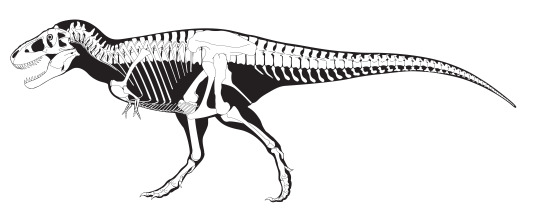
Tyrannosaurus rex skeleton diagram. | Source: Smithsonian Institute.
While the two share several key features (forelimbs of reduced size, two functional digits, four toes with the dewclaw suspended off the ground, elongated tibiae), they differ in enough ways that I’m hesitant to call them close relatives. The skull of tyrannosauroids has a tall premaxillary bone that’s blunted at the front of the snout and gradually sloped upward, with a smaller mandible. The front of the deviljho’s cranium, by contrast, looks to be either highly fused or compressed, with the parietal, postorbital, and premaxilla bones all part of a short upturned snout. The massive dentary is disproportionately larger and elongated, with these weird teeth/tubercle-like protrusions on the outside of the jaw. Originally I thought they were functionally analogous the external teeth of the dragonfish (Bathophilus indicus), but they’re too big and not recurved enough to be useful for prey-capture. So maybe they’re a fossorial adaptation like the horns on Peltephilus and Ceratogaulus? Dunno. Anyway, it’s not really relevant.
You’ll notice this skull shape is pretty consistent amongst all the tyrannosauroids.

Size comparison between several tyrannosauroid species. | Source: Wikipedia contributor user:Conty.
Despite a few visual similarities, I think it’s safe to rule out any chance of the deviljho being directly related.
The anjanath, on the other hand, is (probably) a tyrannosauroid. For the moment disregard the fact it breathes fire and focus on the overall morphology.

Anjanath concept art for Monster Hunter: World. | Source: u/Haru17 on r/MonsterHunter.
Seeing as we have no way to study its pelvis and look for the other tyrannosauroid features (concave notch on the ilium, a “boot” on the end of the pubis, etc.) we’ll have to rely on the skull, digits, and overall posture. Like the T. rex and its kin, anjanaths possess the same number of toes and fingers. Identical s-shaped neck, identical long tail, and the skull shape matches the silhouettes in the third image.
As for the paired dorsal sails and nasal crest? They can be easily explained away as derived traits. That inflatable sac in particular reminds me of the one seen in the Speke’s gazelle (Gazella spekei), which is used as a resonance chamber to amplify the honking alarm call it makes.
Hopefully this answered your question! I’m sorry it took so long to get back to you on it.
32 notes
·
View notes
Photo

The bones of an opah, a deep-bodied pelagic lampriform, at #theNAT’s terrific #Unshelved: Cool Stuff from Storage (at San Diego Natural History Museum) https://www.instagram.com/p/Bmvq_KDH9HO/?utm_source=ig_tumblr_share&igshid=d232yixouas8
0 notes